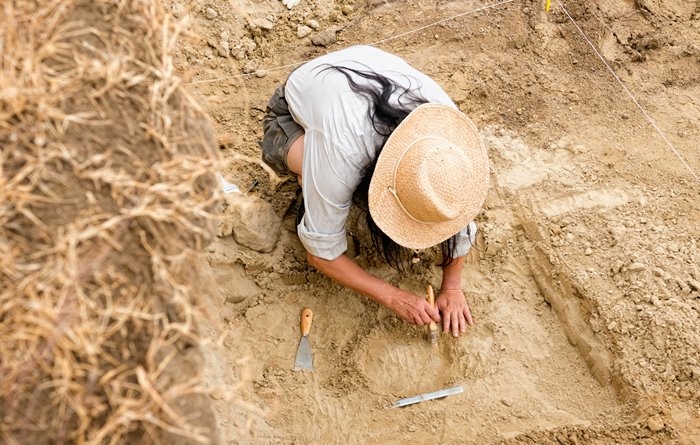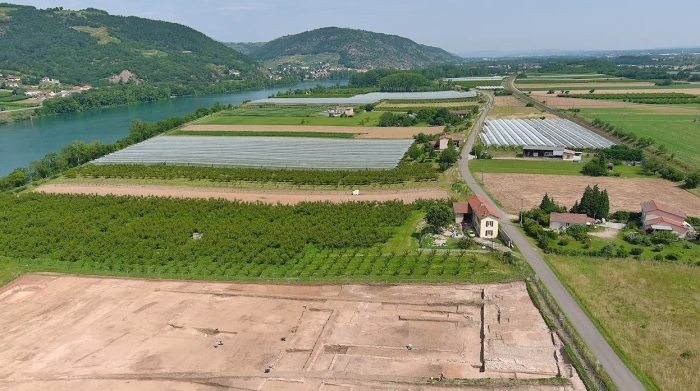Discovery of a 1,900-Year-Old Winery in France's Rhône Valley
A 1st-Century winery discovered in the Rhône Valley
2023-12-21

In the lush, vine-covered landscapes of France's Rhône Valley, a region famed for producing some of the world's most esteemed wines, a remarkable discovery has unearthed a hidden chapter of viticultural history. The Institut National de Recherches Archéologiques Preventives (INRAP), under the auspices of France's Ministry of Culture, recently announced a significant archaeological find—a 1,900-year-old winery near Laveyron in the Rhône's Drôme department. This discovery not only adds a new dimension to our understanding of ancient winemaking practices but also connects us to the deep historical roots of this celebrated wine-producing region.
The excavation, which began in May 2023, uncovered the ancient winery on a 4-acre site, initially earmarked for a heavy goods vehicle parking lot by Saica Group, a leading recycled paper manufacturer. The archaeologists, who expect to complete their work by January 2024, have meticulously unearthed ruins that offer a fascinating glimpse into the winemaking traditions of a bygone era.

Initial findings suggest that the winery dates back to the first century A.D., with possible foundations stretching back even further. Pascale Réthoré, INRAP operations and research manager, highlighted the discovery of post holes that might indicate the presence of a palisade built by the Iron Age's La Tène culture, potentially around 50 or 30 B.C. This era, rich in cultural and technological advancements, now reveals its connections to viticulture, an integral part of the region's heritage.
Evidence at the site includes ceramic dolia (large terracotta vessels used in ancient winemaking) and fragments of amphorae in nearby dumpsites, suggesting an established tradition of wine production and storage. The ancient Romans, known for their contributions to viticulture, added a three-room structure, a courtyard, walkways, and galleries during Emperor Augustus's reign, between 27 B.C. and 14 A.D. Réthoré's insights into the site's development over time, including the expansion of the winery with wood casks, presses, cellars, and grape juice collecting basins, underline the commercial success and sophistication of this ancient enterprise.
The location of the winery within the territory of the Allobroges, a Gallic people renowned for making vinum picatum, a favored Roman wine, underscores the significance of this discovery. The Romans' appreciation for the region's wines may be further corroborated by future analyses of juice residue and grape seeds, potentially unearthed in upcoming excavations. Réthoré's enthusiasm about the site's exceptionality reflects the enduring interest in ancient winemaking and the recognition of the region's quality and terroir since antiquity.
Despite the historical importance of this find, the planned development of the site will proceed once archaeological excavations are completed. This impending loss underscores the transient nature of such discoveries and the ongoing tension between preservation and progress. As we bid farewell to this ancient winery, it serves as a poignant reminder of the rich, yet often ephemeral, tapestry of human history embedded in the soils of the Rhône Valley.
As we raise a glass of Syrah, paying homage to this ancient winery, we are reminded of the timeless words: "Tempus fugit." The fleeting nature of time is poignantly reflected in this extraordinary discovery, bridging the gap between past and present, and leaving an indelible mark on the annals of viticulture.
Founded in 2007, Vinetur® is a registered trademark of VGSC S.L. with a long history in the wine industry.
VGSC, S.L. with VAT number B70255591 is a spanish company legally registered in the Commercial Register of the city of Santiago de Compostela, with registration number: Bulletin 181, Reference 356049 in Volume 13, Page 107, Section 6, Sheet 45028, Entry 2.
Email: [email protected]
Headquarters and offices located in Vilagarcia de Arousa, Spain.